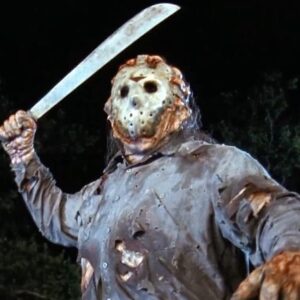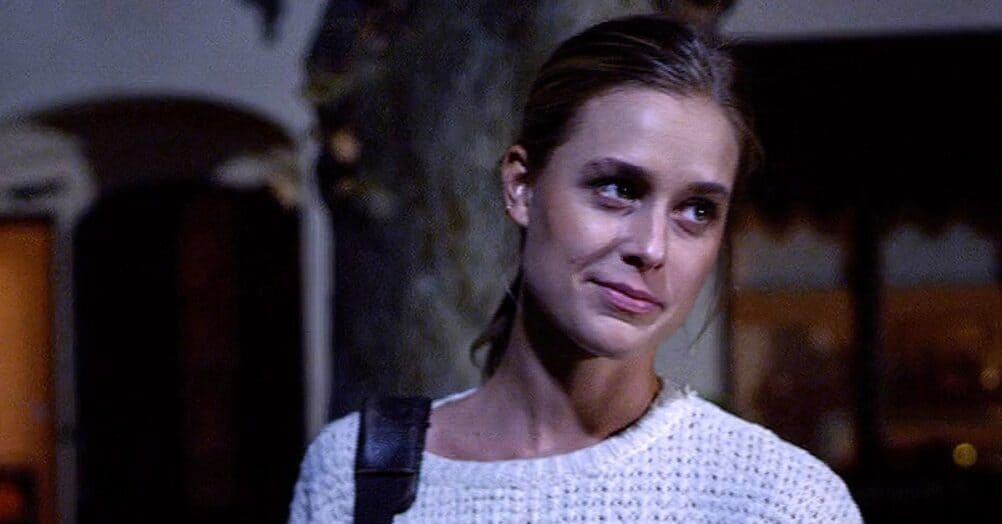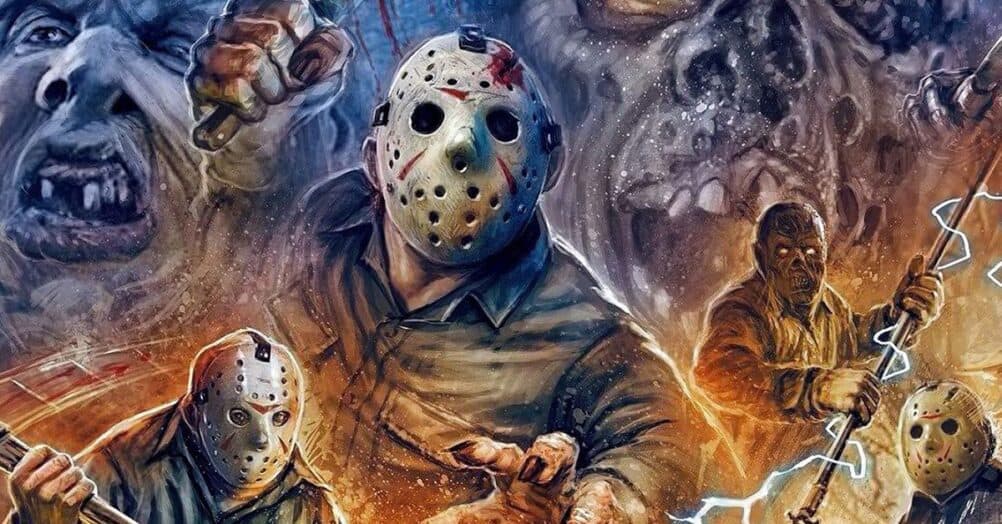Last Updated on January 6, 2025
So, you’ve created a legendary horror icon. What’s next? A sequel, obviously! But not just any sequel. A sequel that would conjure a brand new boogeyman. A sequel that wouldn’t actually feature Candyman at all. Nor the man who brought him to life: Tony Todd. What in the Halloween III am I talking about? You’ll find out in today’s video… what happened to Candyman: Farewell to the Flesh.
Back in the early 90s director Bernard Rose pitched the original Candyman to Propaganda Films producer Steve Golin. Golin had low expectations for the film and was unhappy from start to finish. Especially after viewing the final product. Rose would tell Bloody Disgusting that Golin “actively disliked it”. As is often the case with producers, he changed his tune once the film was a financial success. Golin told Rose, “It’s a great movie! Or… it is now”. Rose took the opportunity to ask for a straightaway sequel. It was accepted, and he was even to be paid quite a bit more than he had for Candyman (for which he still hadn’t yet been compensated). Rose would come up with an idea he called “quite radical” and it was. He decided instead of making a straight-up sequel, he wanted to make Candyman 2 about the idea of Jack the Ripper haunting London in the 90s. Rose had intended to delve further into the Clive Barker catacombs and tell a tale in part inspired by his 1984 short story Midnight Meat Train. Which was eventually made into a gnarly little Bradley Cooper horror film in 2008. Before he was “Mr. Fancy Pants”. Whereas Candyman dealt with race and mythos, this film was to tackle the issue of gender and eventually classism when we find out the rich were eating the poor using Jack the –Wait a minute where the f*ck is Tony Todd’s Candyman? Exactly. He wasn’t in it. Candyman wasn’t a part of Candyman 2, save for a part early in the script where he’s mentioned by Professor Purcell explaining that the Ripper was “like” a Candyman. The only part of that idea that made it somewhat into the final product.
To no surprise, Golin and the studio were furious at the thought of this and rejected the sequel full stop. In Rose’s defense, he felt like he earnestly killed Candyman in the first film. He really couldn’t understand at the time why no one else acknowledged this fact. He would later change his opinion on this saying he wouldn’t have attempted that idea today. He says he would have just made a straight-up sequel following the plight of Helen, played by actress Virginia Madsen and Candyman. Rose also offered his praises for what the next director hired, Bill Condon, was able to do with the project.
Actress Virginia Madsen would tell her side of the script debacle as well stating, “They originally wanted us to do Candyman 2, but they didn’t like Bernie’s idea for the sequel. They made the Candyman into a slave. Which was terrible because the Candyman was educated and raised as a free man. Bernie wanted to make him like an African American Dracula which I think was so appealing to the African American community because they finally had their own Dracula. The Candyman was a poet and smart. He wasn’t really a monster. He was sort of that classical figure. The sequel that Bernie wanted to make was a prequel where you see the Candyman and Helen fall in love. It was turned down because the studio didn’t want to do an interracial love story.”

Regardless, what ended up happening was a search for a new director. Enter Bill Condon who said, “I met with Clive Barker and he knew some of my stuff, and after many convolutions, they finally gave it to me.” Condon (who would later go on to direct several of the Twilight films and write The Greatest Showman) had, to that point, directed a string of TV movies including Murder 101 with Pierce Brosnan, and written projects like Strange Invaders, and F/X 2. Though not given writing credit for the film, Condon says he did a lot of work on the script along with the second writer of the film, Mark Kruger. The two of them working on a script originally written by The Astronaut’s Wife’s Rand Ravitch, and of course, based on the work of Clive Barker.
The story the three men ultimately conjured began with Professor Phillip Purcell (played flamboyantly again by a memorable Michael Culkin) showing up in New Orleans on his Candyman book tour. Which, I should note has a totally kick-ass cover that resembles a mirror. A mirror that he would look into at one of his book signings and speak the name ‘Candyman’ five times into. He’s then naturally gutted from groin to gullet in the bathroom of a bar. Candyman is back. The story then follows Annie and the Tarrant family as she uncovers the truth about the origin of Candyman and his deep ties to the tragedy of her family. All the while Candyman stalks her and murders those around her.
Casting for the film proved to be a challenge as the script was rejected by its fair share of the actors. Including A Nightmare on Elm Street 4’s Tuesday Knight (A huge bummer considering we could have had another “Running from this Nightmare” banger on the soundtrack. But I digress). Condon explained, stating, “There is an initial kind of resistance to sequels and horror films in general. So, I was calling favors trying to get people like Veronica Cartwright who I had worked with before. We saw a lot of actors and actresses. Kelley Rowan for the lead just popped out; she was wonderful”.
Rowan, who had previously played characters in both The Gate and Hook would more than admirably take over the mantle as the film’s lead character. But we all know who the true lead is in any Candyman movie. Screen time be damned. It’s Candyman. Tony Todd.
One can argue Farewell to the Flesh lost some things in the move from Chicago to New Orleans but one thing that always managed to stay the same was Todd’s performance. Just as haunting, demanding, and regal as he had been in the original. A true professional, Todd slashed his way through Farewell to the Flesh seemingly with ease. Solidifying his character as a horror icon that could keep coming back as long as the franchise built around him could keep the lights on. While that turned out to be a depressingly short amount of time, it doesn’t change the fact that we all know Todd would have been great in a hundred Candyman films. Regardless of their quality. Though his roles were many and his performances were often underrated, Todd managed to make every project he was in all the better for it. In the same way Nicolas Cage has been able to create a meaningful moment in each of his films regardless of the quality surrounding him; Todd has elevated all of the material we were fortunate enough to have him be a part of. Farewell to the Flesh is no different.

As an example of Todd’s deep thought and dedication to his roles, here’s what the late actor had to say about the backlash to Farewell delving into Candyman’s origins: “I insisted that we did scenes of him in his former life. Now, there are a lot of fans that don’t get that. But the ones that are intelligent do. It’s a gothic love story at its core”, Continuing, “Some people go from love to love. In Helen and Daniel’s case, it was the one and only. And to be punished for passionate love is unforgivable.”
Todd was surrounded by a large and reasonably impressive cast that included Beverly Hills Cop III’s villain, Timothy Carhart as Annie’s loveable Cajun husband. As well as an impressive performance from the aforementioned Alien actress Veronica Cartwright, who plays Annie’s dying mother with a major secret. Other notable faces surrounding Candyman as he murders freely are Spider-Man’s Bill Nunn, and Under Siege: Dark Territories’ David Gianopoulos. The film is full of noteworthy character actors including Matt Clark as someone with ties to the past who might remind you of a Cajun Joe Bob Briggs.
With the cast in shape, Condon and the crew shot equally in both Los Angeles and New Orleans, where he estimated they spent around twenty days and many nights filming. Though Condon was a fan of how Rose turned Cabrini Green into a modern haunted house, he wanted a more traditional gothic setting. He wanted to create an ambiance that resembled the older, less corporate version of Mardi Gras. So, Condon hired one of the city’s lesser-used Hollywood locals. Someone who had a warehouse full of old-school floats and decorations. Including a pan float featuring a huge penis. A penis float that, according to Condon, can be seen in the film if you’re paying close enough attention.
Condon told The Clive Barker Cast that they worked with a company called Introvision on several difficult and practical Special Effects moments. He estimated that roughly 40% of the film was storyboarded because of the difficulty of these effects. Including the slave quarters being demolished in the climax of the film. It wasn’t just special effects headaches that made bringing Farewell to the Flesh to life challenging. The crew were continuously running out of extras because the New Orleans environment kept beckoning them to imbibe in the fun of the city. The extras would start strong then as the night went on disappear into the many surrounding bars unlikely to return. Condon elaborated, “By the end of the meal break there’d be no extras left. That became a big problem for us. People are very dedicated to having a good time down there.”
Then, of course, there were the actual bees. Of which, Condon lamented, “It may have been true they had very few stings in the first film, but in ours, I think there were unfortunately plenty of stings. It was never pleasant, especially for poor Tony Todd and (stunt coordinator and Tony Todd double) Billy Washington”. Despite the challenges, they were at least able to give Candyman a wardrobe upgrade. Condon noted that they gave Candyman a “sleeker, sexier kind of look than the rat fur that he was wearing on his collar in the first movie. We gave him more of an Armani kind of look.”

The upgraded titular character would finally be unleashed on the world when Candyman: Farewell to the Flesh swarmed to theaters nearly three years after its predecessor on March 17th, 1995. With an unknown exact budget (IMDB estimates an unconfirmed budget of around $6 million), the film made just about that amount in its opening weekend. Then closed out at nearly $14 million by the end of its theatrical run. Whether or not this was enough to turn a profit is probably answered by the fact that the sequel, Candyman 3: Day of the Dead headed direct to video.
The reviews couldn’t have helped with most critics praising Todd but seeing the film as another unnecessary gore-fueled horror sequel. Condon didn’t agree and noted that critics did realize what the film was trying to say with its deeper themes surrounding racism, violence, and love. But simply disregarded them because it was a genre sequel stating, “It’s interesting to note that there were critics who would acknowledge all of the subtexts, but would say, ‘Surely, they weren’t thinking about that because it’s just a slasher movie.”
To throw some fuel on the fire, some of the film’s marketing had landed the production in hot water. A poster marketing the film that featured Candyman standing behind his victim caused the production to be accused of trying to profit off the ongoing OJ Simpson publicity. Because it featured a black man stalking a white woman (it’s easy to forget ridiculous feigned outrage existed long before Twitter). Clive Barker responded to this accusation directly on a talk show when a call-in viewer asked about it. The horror legend responded, “I thought it was nonsense. We made this movie a long time ago. We made the movie that this is a sequel to a long time ago. There was no association whatsoever in our heads. I felt it more reflective of America’s present preoccupation with the trial than about the advertising.”
Barker seemed at least somewhat happy with the film itself, saying on the same show, “It has a lot of damn fine acting and good storytelling. It feels to me as though horror has become debased in the last few years and when we talk about horror movies recently we think about mindless pieces of bloodletting and we’ve tried to do something better than that.”
I’d agree there are certainly things to enjoy when it comes to this sequel. Another underrated Tony Todd performance we’ll be able to forever enjoy; A horror movie that utilizes the unique setting of New Orleans and some decent kills. Arguably the best sequel in the franchise. That, my friends, is what happened to Candyman: Farewell to the Flesh.
A couple of the previous episodes of What Happened to This Horror Movie? can be seen below. To see more, head over to our JoBlo Horror Originals YouTube channel – and subscribe while you’re there!




















Follow the JOBLO MOVIE NETWORK
Follow us on YOUTUBE
Follow ARROW IN THE HEAD
Follow AITH on YOUTUBE